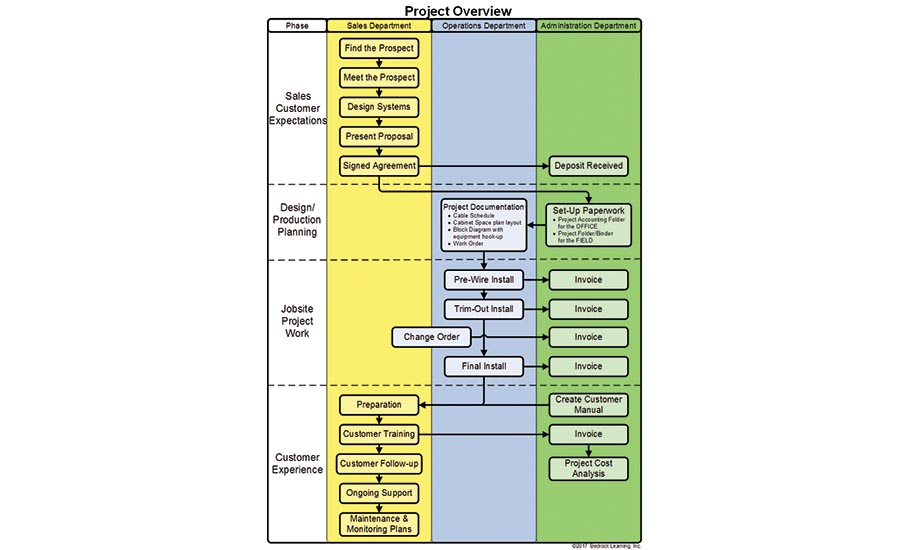We’ve all had them: trials and tribulations on project installations. The culprit is often poor communication or lack of communication. These days more integrated products are being installed. Every system within the home is smarter and more connected, and technology continues to change at warp speed. All of this makes good communication and cooperation critical to project success. There needs to be a fundamental shift in the way integrators, builders, architects, interior designers, remodelers, and contractors such as mechanical, electrical, plumbing and landscapers interact and collaborate.
I moderated a panel at a conference last month on business collaboration and learned so much from experienced panelists and sponsored guests about what makes for a successful project. I heard it loud and clear: “Collaboration, not just communication, is necessary to deliver the smart home.” Numerous topics came up during the discussion and I’ve distilled key ideas here.
Sales, Planning & Setting Customer Expectations
For potential clients, strive to get involved early. Be there during the design phase and help define the core systems going into the home. Don’t let TV ads set customer expectations. Explain choices, capabilities and benefits, and what it will take to deliver their ideal home experience. Share what living in their home will be like and set realistic expectations. Keep it simple and build packages with features to benefit your customers and products to support installation.
Upon completion schedule multiple training dates — three times over three weeks to ensure their comfort with the systems. Consider short video manuals to refresh memories on system use.
Project MGMT & Jobsite Work
The majority of time spent on a project is by the operations department — in the shop prepping and in the field working. It is critical that operations people be well-organized and efficient. Establish a project manager responsible for all coordination. Keep proper documentation; make it detailed, accurate and up-to-date.
Hold a project kickoff meeting; share each trade’s responsibilities and space requirements for system components. Continue with scheduled trade/job site meetings over the life of the project.
Follow industry standards in design and installation, and create and follow your own procedures. While doing the work use project checklists and address any changes immediately with a signed change order.
Teamwork & Communication
Success relies on teamwork and good communication. Get involved with all players on a project and build a team, sharing your team lead, the project manager. Document everything in writing and share. Use technology when communicating to ensure consistency and streamline the process.
Provide frequent updates to the team, including the customer. When integrating systems in a project, offer ongoing services such as warranty and maintenance agreements.
Overall Suggestions
Education drives understanding, acceptance, support and future projects. Share the benefits of what you can do and educate potential customers, professional trades, and any parties working on projects. Define the scope of the project and get involved from the very start of the project through completion and beyond.Last, use visuals such as a process flow chart to get everyone on the same page. Drop me an email, helen@bedrocklearning.com, and I’ll send you this Project Overview Flowchart in Visio to customize and share with your team.




